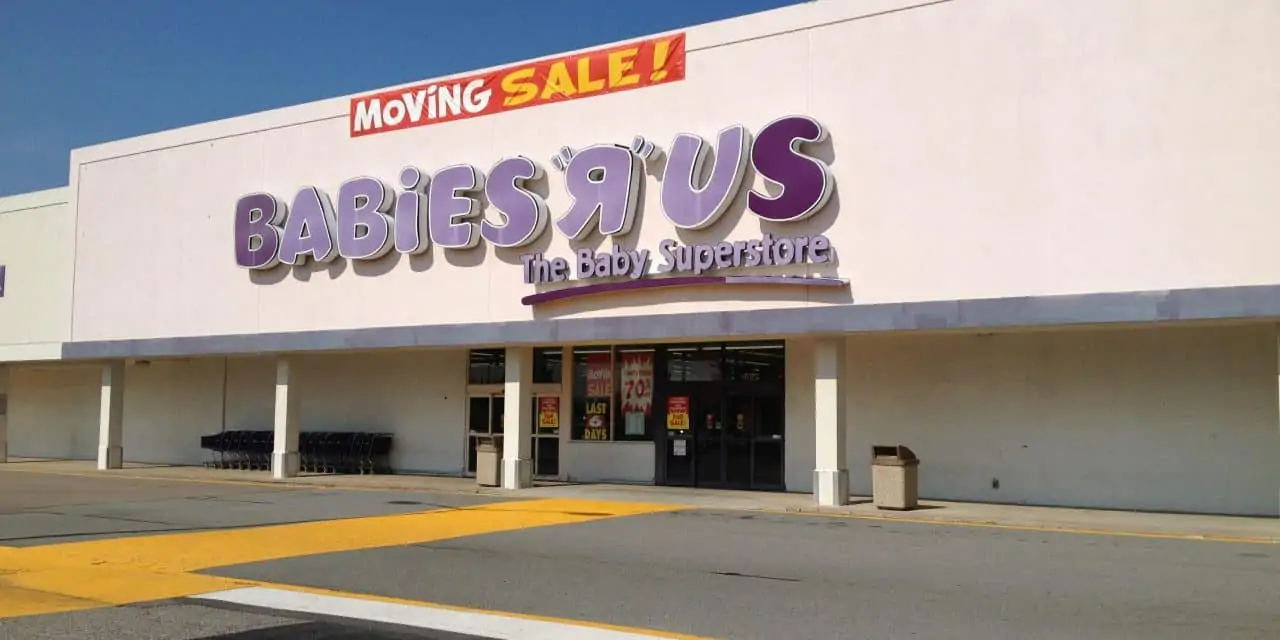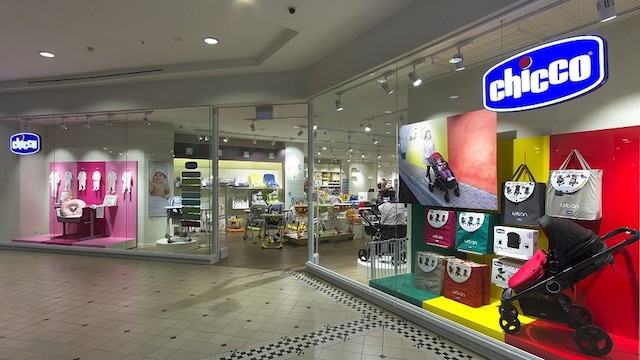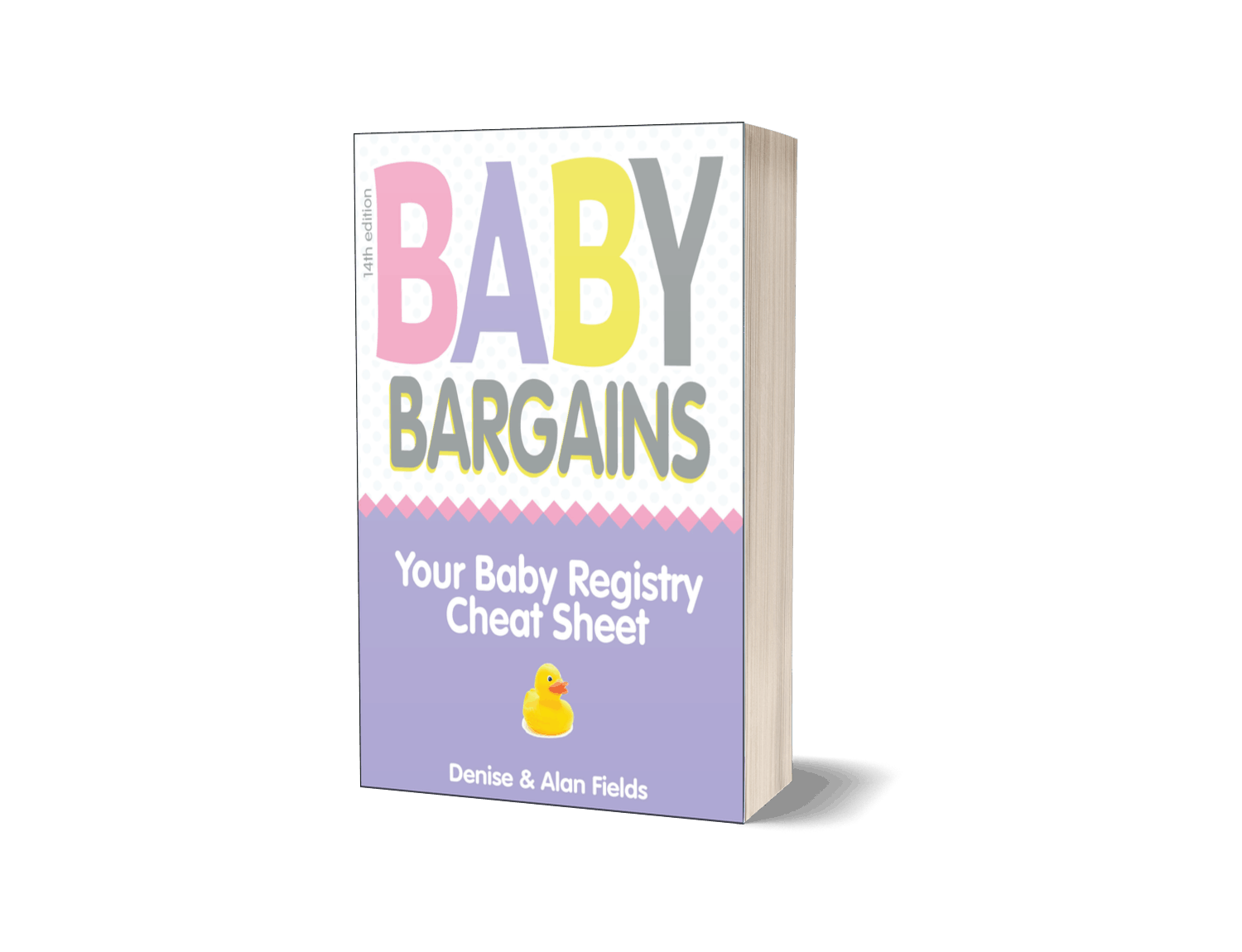Babies R Us is dead. Now what?
Posted: . Babies R Us is dead. Now what? Yes, it finally happened—after years of hemorrhaging customers and sales, Babies R Us is gone—to be liquidated and join the pantheon of dearly departed retailers like Borders, Circuit City and Sports Authority.
But unlike those retailers that were second or third place in their categories, Babies R Us was actually the leading retailer of baby gear in the US . . . parent Toys R Us didn’t break out Babies R Us share of its $11 billion in annual sales, but it was significant.
Basically, Babies R Us closing leaves a Wily E. Coyote size hole in the baby gear market.
So, now that Babies R Us is gone, what will happen to how baby gear will be bought and sold?
Because no one asked, here are our quick thoughts:
1. Do parents even want to buy gear in stores anymore? Babies R Us was built on the superstore concept of the 90’s—take a giant 20,000 square foot building and load it up to the ceiling with car seats, strollers and other gear.
Prior to the 90’s, baby gear was sold in independent specialty boutiques and chain stores like Target, which had a very limited selection of items. For a while, the superstore concept was on a roll—parents abandoned boutiques for the bigger stores, stopping by frequently for diapers and other stock-up supplies.
Then came along a small online bookseller named Amazon. It’s hard to imagine, but even as recent as 10 years ago, it was unclear whether anyone could profitably sell baby gear online and if parents really wanted to shop that way.
You know the ending of that movie. But what happens now that stores like Babies R Us aren’t around to showcase product for folks to see in person?
One could argue a competitor like Buy Buy Baby (135 stores) could step into the giant hole left by Babies R Us, which had twice the number of stores (not counting the combination outlets with Toys R Us). But parent Bed Bath and Beyond has had its own challenges lately, with declining sales and profits. Already struggling to compete against Amazon, it’s unclear whether Buy Buy Baby will saddle up and build another 100 stores to become the new Babies R Us.
2. What do baby gear makers do? One thing about the Babies R Us liquidation is for sure: it is a wrecking ball for large brands like Graco, Baby Trend and Britax, who depended on the chain for an outsize portion of their sales. One obvious outcome would be more consolidation among the brands—that has already happened to some extent, with Graco buying stroller maker Baby Jogger in recent years.
One interesting possibility: is the future the Isle of Capri? While on vacation in Italy, we wandered into the main shopping district on the Isle of Capri to discover a Chicco baby store. The Italian brand has 150 stores in Italy and another 160 elsewhere worldwide. The store showcased both Chicco toys and baby gear, like a mini Apple store for baby stuff. Here’s what a Chicco store that opened in 2016 in a Singapore mall looks like:
Japanese baby gear brand Combi quietly opened its own factory store outside Los Angeles a couple of years ago.
We could imagine a brand like Britax buying a smaller player like Nuna and then opening a series of Britax boutiques in shopping villages like Seattle’s University Village that is also home to . . . an Amazon Books.
3. Will there be a comeback of independent baby boutiques? One casualty of the move to online shopping certainly has been the near wipeout of independent baby stores—stores like Goore’s in Sacramento and Great Beginnings in DC were roadkill as parents decided they’d prefer to shop online. So will the demise of Babies R Us bring out a renaissance of indie stores?
That seems highly unlikely. Margins on baby gear are now as thin as they have ever been—and we don’t think Amazon or Walmart will be giving up on their efforts to slug it out in the category any time soon.
Again, this gets back to the question of where parents want to shop? Folks say they want shop in small, indie stores . . . like they say they want to eat more kale. When it comes down to spending those hard earned dollars, however, that sweet 17% discount off retail and free two-day shipping are too great to resist.
That said, it is possible that regional chains like Magic Beans could evolve their toy store/baby gear boutique concepts into nationwide success stories. While we think the folks at Magic Beans are talented merchants, we wouldn’t bet the farm on this. On the other hand, if folks really want more curated shopping experiences instead of the baby superstore massive wall of pacifiers, then perhaps this could be part of the baby gear future.
Wild card: the “baby recession” and the current economy. One trend that didn’t get much mention in Babies R Us demise was the decline in the number of births—in 2007, there 4.32 million babies born in the US. That number shrank to 3.95 million in 2016. That’s 370,00 fewer kiddos each year, with car seats not sold and strollers not strolled.
The baby recession was unprecedented—even though the US economy expanded from 2010 to 2016, slow wage growth and job instability convinced many would-be parents to sit on the sidelines (or forget that 2nd child). While the number of babies born typically declines in rough economic times, the number usually rebounds when the economy comes back. For the last 6 years, it didn’t.
Now that there are signs the economy is picking up steam, could this mean a baby boomlet? After all, if you put off having a child in 2010 because you were afraid you’d lose your job and were 28 years of age, now you are 36. And the clock is ticking. Could this group jump in at just the same time that others are thinking, hey, times are good, let’s start a family?
Our point: if there is a rise in the number of babies in 2018 or 2019, that rising tide may give birth to new baby gear shopping concepts no one has thought of yet.
What do you think?




 We obsess over gear for families . . . so you don't have to. Baby Bargains has one mission: help you find the best gear for your family and home with unbiased reviews by experts with 20 years of experience. At prices that don't break the bank. When you purchase a product from links on this site, we make a small affiliate commission. Learn more
We obsess over gear for families . . . so you don't have to. Baby Bargains has one mission: help you find the best gear for your family and home with unbiased reviews by experts with 20 years of experience. At prices that don't break the bank. When you purchase a product from links on this site, we make a small affiliate commission. Learn more 

Hi trying to locate a babies blue silk on one side silk on the edge The Edge Board and I believe I bought it in Babies R Us is there any stores that are open there are they all closed
All Babies R Us stores have closed.
I purchased a ZOBO stroller that is missing the tray. How can I get the attacment for the stroller?
Since this was a private label brand for Babies R Us, I don’t think there is a way to get replacement parts. Sorry!
How can I obtain the missing tray from the new ZOBO stroller that was purchased from BABIES R US?